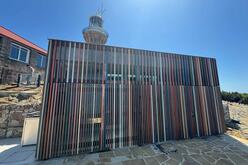Perth CBD office proves resilient despite pandemic
Perth’s CBD office market has proved remarkably resilient to date despite the impact of the COVID-19 pandemic.
The overall vacancy rate for the six months to July 2020 was 18.4 per cent, in line with a year ago, and only slightly higher than the January 2020 vacancy rate of 17.5 per cent vacancy. In the six months to July 2020, an extra 17,174sqm of supply was added and 12,500sqm was withdrawn for a total vacancy of 331,570sqm.
Perth CBD’s July 2020 vacancy rate compares with 14.2 per cent in Adelaide CBD, 12.9 per cent in Brisbane CBD, 10.1 per cent in Canberra CBD, 5.8 per cent in Melbourne CBD and 5.6 per cent in Sydney CBD. The Australian CBD vacancy rate was 9.2 per cent, below its historic average.
Property Council of Australia’s Office Market Report vacancy rates, calculated on July 1, are measured by whether a lease is in place for office space, not whether the tenant’s employees are occupying the space or working from home.
Property Council WA Executive Director Sandra Brewer said Perth’s Premium and A-grade office continued to perform strongly but vacancies rose in the lower grades.
Perth’s July 2020 Premium vacancy fell to 6.8 per cent, from 7.4 per cent in January 2020; A-grade was steady at 15.8 per cent; B-grade rose to 28.7 per cent (25.9 per cent in January) and C-grade was 21.7 per cent, from 20.5 per cent in January2020 and D-grade was steady at 16.0.
Chevron’s move to relinquish 13,360sqm at Dynon Plaza, 905 Hay Street, had been well telegraphed to the market.
West Perth’s July 2020 vacancy, at 22.1 per cent, from 17.9 per cent in January 2020, and 17.3 per cent in July 2019, was also as a result of pre-pandemic moves by four tenants across five buildings, who relinquished 17,000sqm of A-grade West Perth office to return to the CBD.
“Perth and Adelaide was the only capital cities in the country to report a reduction in space available for sublease,” Ms Brewer said. “Perth’s CBD market, which was thought to be on the cusp of a turnaround before the pandemic, has so far experienced relatively moderate effects. The industry will be monitoring tenant demand and sublease vacancy over the next six months as the economic impact of the pandemic plays out.”







